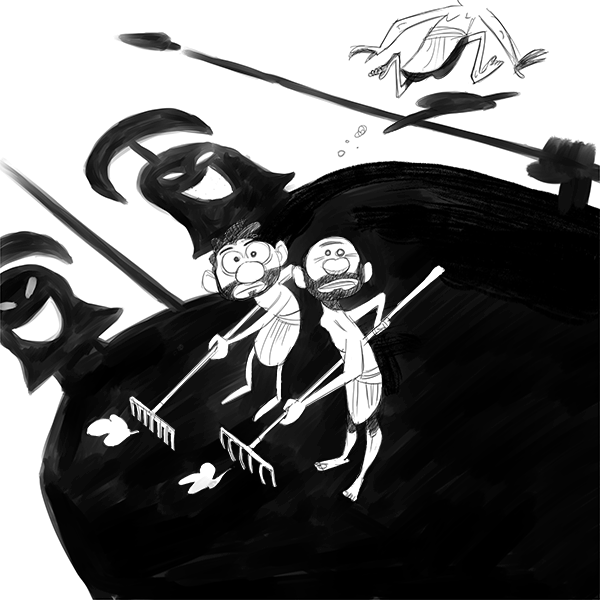Pretty much the only reason we know about ancient Sparta today is because of its army. There were no great Spartan poets, philosophers, or mathematicians.
Instead, we remember Sparta because of people like Leonidas. He was the king who resisted the entire Persian army with just three hundred soldiers at the Pass of Thermopylae, potentially saving all of Greece from complete and total annihilation. No big deal.
In ancient times, both Greeks and non-Greeks alike feared the Spartan army. Even today, modern militaries remember Spartan soldiers as model warriors.
But what made these fighters so special?
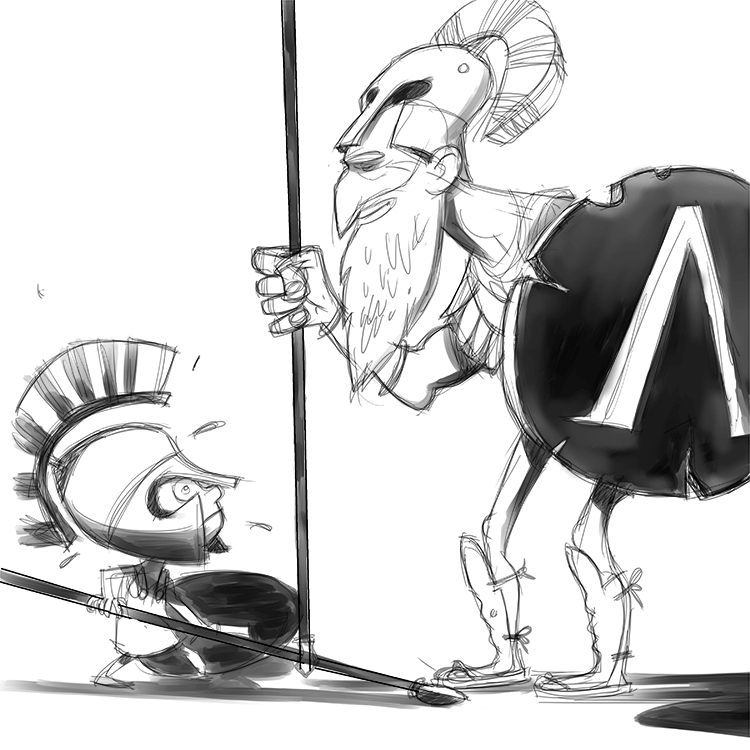
The Agoge: Training Soldiers From Birth
The main thing that set Spartan soldiers apart from their ancient counterparts was their training.
Spartan society valued military strength above everything else. So, all Spartan boys were sent to military school — known as the agoge — at the age of seven.
There, they were taught not only how to fight but also how to live off the land, steal food, discipline their minds, and, most importantly, work together.
In fact, the bonds of friendship and brotherhood formed at the agoge were the Spartan army’s greatest strength. No soldier was considered more important than the other, and each one understood their role in group survival.
Training at the agoge was intense. But if you finished it (at age twenty) you were given land and lots and lots of social credit. However, just because you were done with school didn’t mean you were done training.
Spartan soldiers continued to live at a military barracks until they were 30-years-old, and training was a lifelong pursuit.
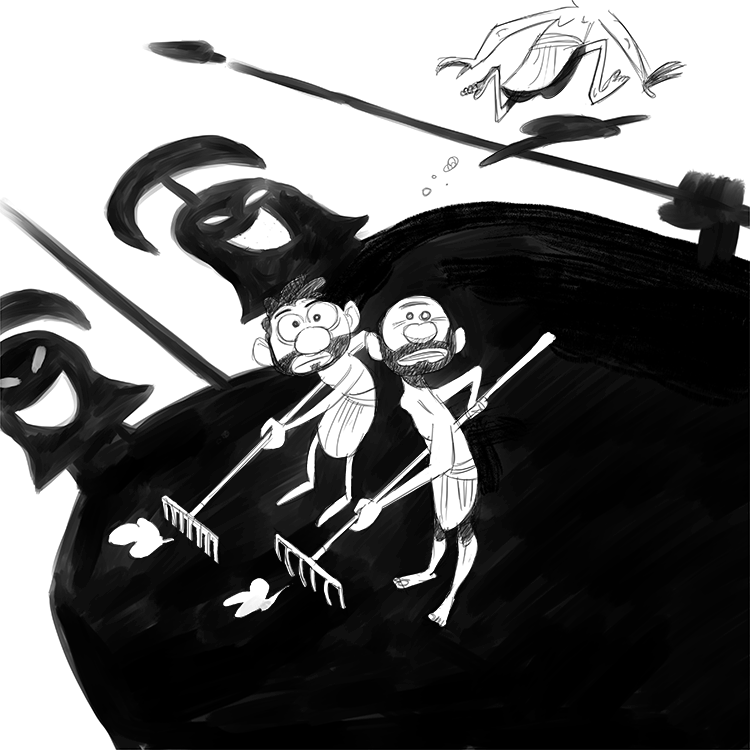
Terrorizing the Helots: The Spartan Secret Service
Boys who excelled at the agoge were often chosen to participate in the crypteia, aka the Spartan secret service.
Now, depending on which era in history you look at, being part of the secret service could be a great honor or a great stain on your reputation.
For example, being on the US Secret Service, the one tasked with protecting the president, is a pretty cool job. But being on the Secret Service in Nazi Germany, not so much.
Turns out the crypteia was closer to the German secret service than the modern American one. Their primary task was to terrorize the helots — the slaves.
Helots were the backbone of Spartan society because they provided all the manual labor. But they were also slaves with no rights, and so they frequently rebelled.
To prevent this from happening, the crypteia would roam the countryside, beating and killing helots as they saw fit. Nothing like a yearly beating to make you afraid of rebelling.
That this duty was reserved for the most “elite” members of the Spartan army says quite a bit about this culture’s values. Sure, it was a different time. But it’s hard to look past the cruelty.
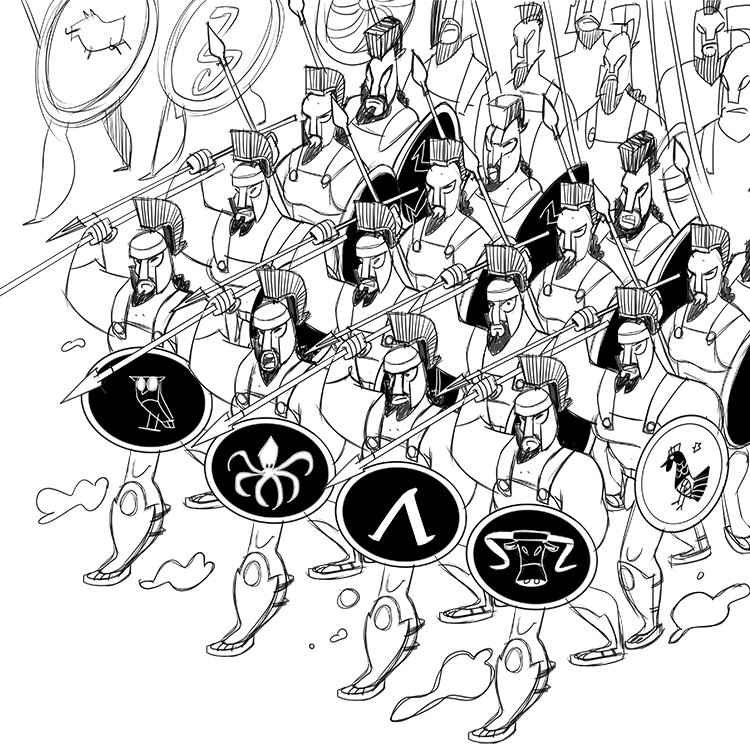
The Phalanx Formation
The Spartans were so successful as a military unity because they perfected the phalanx formation.
This was a pretty simple way to line up their troops. Basically, soldiers — known as hoplites in Ancient Greece — stood side by side. They would use their shields to protect themselves as well as the person next to them. Their spears stuck through the gap between shields, and the formation marched in unison.
The strength of the formation depended on the cohesiveness of the unit, and this is where the Spartans excelled. Their intense training at the agoge taught them how to build a nearly impenetrable line.
Interestingly, all Greeks fought with a phalanx. But the Spartans were just better at it.
Later on in the Classical Era, the Theban army improved their own phalanx, and defeated the Spartans at the Battle of Leuctra. This was one of Sparta’s first-ever battle losses, and it forever changed the course of Greek history.

Spartan Military Equipment
In addition to fighting using the same formations as their fellow Greeks, the Spartans also used pretty much the same equipment.
Spartan soldiers wore a helmet and breastplate, usually made of either iron or bronze. They also carried a shield made from wood but covered in a thin layer iron or bronze for added strength.
For weapons, they carried spears, tipped with metal, as well as a shortsword they could use in close combat. Some soldiers carried javelins to throw at oncoming enemies, though this was not standard.
Spartan soldiers were responsible for making their own armor and weapons. Well, not exactly, since they were forbidden from doing manual labor.
Instead, they would need to find someone to make it for them. But since they were the richest and most-highly-respected members of society, it was easy enough to find someone to make them swords and spears.
Again, the rest of the Greek world had access to the same weapons and materials. But the Spartans were just better fighters.
Some of the Persians they faced had better iron swords, but they didn’t have the training. This allowed the Spartans to emerge victorious in battle after battle for nearly five centuries.
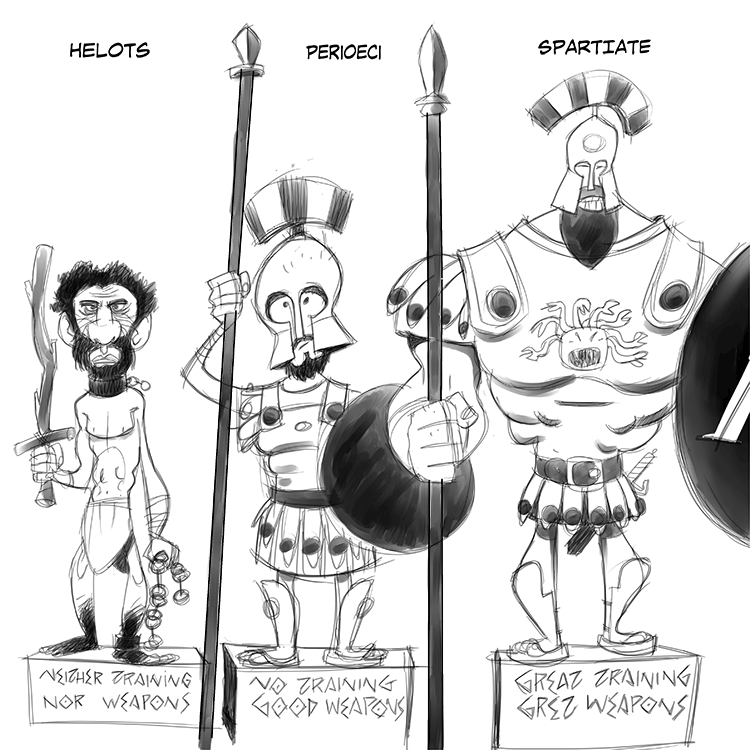
Helots and Perioeci: The Spartan Light Infantry
Spartan soldiers, also known as Spartiates, were the most powerful part of the Spartan army. But they were also the smallest.
Since it was so hard to be a Spartan citizen and soldier, the bulk of the Spartan army was not Spartiates. Instead, it consisted of helots (slaves) and perioeci (free non-Spartans).
These social classes were expected to fight for Sparta when called, yet they didn’t have the same training or weapons. Most helots had nothing more than wooden spears and leather armor.
Yet it didn’t matter to the Spartans. Helots were considered less than human, and they were effective in skirmishes and as support for the main army.
Naturally, the helots resented this role, and it was one of the many reasons why they were constantly rebelling against the Spartan state.
The perioeci were often better equipped, and they had more to gain in battle. If they performed well, they could be rewarded with land or other riches. In some very rare cases, they might be offered citizenship. But such an honor was reserved for only the special few.
An Army Feared in All the Land
Although never more than 8,000 Spartiates-strong at its peak, the Spartan army had the reputation of being the strongest and most powerful ancient army. And given the fact that it didn’t lose a battle for several centuries, perhaps it deserved this title.
However, eventually, someone figured out how to beat the Spartans.
First it was the Thebans at the Battle of Leuctra, then the Macedonians under Alexander the Great. Later, it was the Romans. But before this, the Spartan army was a true force to be reckoned with. Because of it, Sparta became one of the most infamous city-states in all of Ancient Greece.
Written by Matthew Jones
Illustrated by Pablo Velarde Diaz-Pache
